Publication 505 - Tax Withholding And Estimated Tax Page 39
ADVERTISEMENT
1040, line 40) is $11,000. She does not claim
payment period. Also, you cannot use your ac-
Regular Method for
any credits or pay any other taxes.
tual withholding during each period to figure
For 2001, Ivy had $1,600 income tax with-
your payments for each period. These methods,
Figuring the Penalty
held and paid $6,800 estimated tax. Her total
which may give you a smaller penalty amount,
payments were $8,400. 90% of her 2001 tax is
are explained later under Figuring Your Un-
$9,900. Because she paid less than her 2000
You must use the regular method in Part IV of
derpayment.
tax and less than 90% of her 2001 tax, and does
Form 2210 to figure your penalty for underpay-
not meet an exception, Ivy knows that she owes
ment of estimated tax if any of the following
Completing Part III. Complete Part III follow-
a penalty for underpayment of estimated tax.
apply to you.
ing the line-by-line instructions.
She decides to figure the penalty on Form 2210
•
First, figure your total underpayment for the
You paid one or more estimated tax pay-
and pay it with her $2,600 tax balance when she
year (line 18) by subtracting the total of your
ments on a date other than the due date.
files her tax return.
withholding and estimated tax payments (line
•
Ivy’s required annual payment is $9,900
You paid at least one, but less than four,
17) from your required annual payment (Part II,
($11,000 × 90%) because that is smaller than
installments of estimated tax.
line 14). Then figure the penalty you would owe
her 2000 tax.
•
You paid estimated tax payments in une-
if the underpayment remained unpaid up to April
Ivy’s filled-in Form 2210 is shown at the end
qual amounts.
15, 2002. This amount (line 19) is the maximum
of this chapter. Her required annual payment of
•
estimated tax penalty on your underpayment.
$9,900 is shown on line 14.
You use the annualized income install-
Next, figure any part of the maximum penalty
ment method to figure your underpayment
Different 2000 filing status. If you file a sepa-
you do not owe (line 20) because your un-
for each payment period.
rate return for 2001, but you filed a joint return
derpayment was paid before the due date of
•
You use your actual withholding during
with your spouse for 2000, see 2000 joint return
your return. For example, if you filed your 2001
each payment period to figure your pay-
and 2001 separate returns, earlier, to figure the
return and paid the tax balance on April 3, 2002,
ments.
amount to enter as your 2000 tax on line 13 of
you do not owe the penalty for the 12-day period
Form 2210.
from April 4 through April 15. Therefore, you
If you use the regular method, figure your
would figure the amount to enter on line 20 using
underpayment for each payment period in Sec-
12 days.
tion A, then figure your penalty for each payment
period in Section B.
Short Method for
Finally, subtract from the maximum penalty
amount (line 19) any part you do not owe (line
Figuring the Penalty
Figuring Your Underpayment
20). The result (line 21) is the penalty you owe.
Enter that amount on line 71 of Form 1040 or
(Section A of Part IV)
line 46 of Form 1040A. Attach Form 2210 to your
You may be able to use the short method in Part
return only if you checked one of the boxes in
Figure your underpayment of estimated tax for
III of Form 2210 to figure your penalty for un-
Part I.
each payment period in Section A following the
derpayment of estimated tax. If you qualify to
line-by-line instructions. Complete each line for
use this method, it will result in the same penalty
Example 4.5. The facts are the same as in
a payment period column before completing the
amount as the regular method. However, either
Example 4.4. Ivy paid her estimated tax pay-
next column.
the annualized income installment method or
ments in four installments of $1,700 ($6,800 ÷ 4)
the actual withholding method, explained later,
Required installment. Your required pay-
may result in a lower penalty.
each on the dates they were due.
ment for each payment period (line 22) is usually
You can use the short method only if you
Ivy qualifies to use the short method to figure
one-fourth of your required annual payment
meet one of the following requirements.
her estimated tax penalty. Using the annualized
(Part II, line 14). However, if you are using the
income installment method or actual withholding
1) You made no estimated tax payments for
annualized income installment method (de-
will not give her a smaller penalty amount be-
2001 (it does not matter whether you had
scribed later), first complete Schedule AI (Form
cause her income and withholding were distrib-
income tax withholding); or
2210), and then enter the amounts from line 25
uted evenly throughout the year. Therefore, she
of that schedule on line 22 of Form 2210.
2) You paid estimated tax in four equal
figures her penalty in Part III of Form 2210 and
amounts on the due dates.
leaves Part IV (not shown) blank.
Payments. On line 23, enter in each column
Ivy figures her $1,500 total underpayment for
the total of:
Note. If any payment was made earlier than
the year (line 18) by subtracting the total of her
1) Your estimated tax paid after the due date
the due date, you can use the short method, but
withholding and estimated tax payments
for the previous column and by the due
using it may cause you to pay a larger penalty
($8,400) from her $9,900 required annual pay-
date shown, and
than using the regular method. If the payment
ment (Part II, line 14). The maximum penalty on
her underpayment (line 19) is $66 ($1,500 ×
was only a few days early, the difference is likely
2) One-fourth of your withholding.
to be small.
.04397).
For special rules for figuring your payments, see
If you do not meet either requirement, figure
Ivy plans to file her return and pay her $2,600
the instructions for Form 2210.
your penalty using the regular method in Part IV,
tax balance on March 16, 2002, 30 days before
If you file Form 1040, your withholding is the
Form 2210.
April 15. Therefore, she does not owe part of the
amount on line 59, plus any excess social secur-
You cannot use the short method if any of
maximum penalty amount. The part she does
ity or railroad retirement tax withholding on line
the following applies.
not owe (line 20) is figured as follows.
62. If you file Form 1040A, your withholding is
$1,500 × 30 × .00016 = $7
the amount on line 37, plus any excess social
1) You made any estimated tax payments
security or railroad retirement tax withholding
late.
Ivy subtracts the $7 from the $66 maximum
included in the total on line 41.
2) You checked the box on line 1b or 1c in
penalty and enters the result, $59, on line 21 and
Actual withholding method. Instead of us-
Part I of Form 2210.
on line 71 of her Form 1040. She adds $59 to her
ing one-fourth of your withholding to figure your
3) You are filing Form 1040NR or
$2,600 tax balance and enters the result, $2,659
payments, you can choose to establish how
1040NR – EZ and you did not receive
on line 70 of her Form 1040. Ivy files her return
much was actually withheld by the due dates
wages as an employee subject to U.S. in-
on March 16 and attaches a check for $2,659.
and use those amounts. You can make this
come tax withholding.
Because Ivy did not check any of the boxes in
choice separately for the tax withheld from your
Part I, she does not attach Form 2210 to her tax
wages and for all other withholding.
return.
Note. If you use the short method, you can-
Using your actual withholding may result in a
Ivy’s filled-in Form 2210, Part III is shown at
not use the annualized income installment
smaller penalty if most of your withholding oc-
method to figure your underpayment for each
the end of this chapter.
curred early in the year.
Chapter 4 Underpayment Penalty for 2001
Page 39
ADVERTISEMENT
0 votes
Related Articles
Related forms
Related Categories
Parent category: Financial
 1
1 2
2 3
3 4
4 5
5 6
6 7
7 8
8 9
9 10
10 11
11 12
12 13
13 14
14 15
15 16
16 17
17 18
18 19
19 20
20 21
21 22
22 23
23 24
24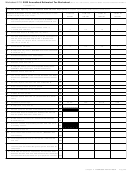 25
25 26
26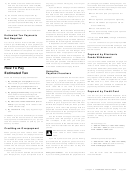 27
27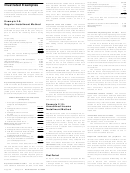 28
28 29
29 30
30 31
31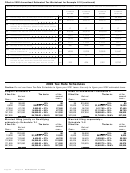 32
32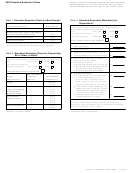 33
33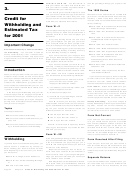 34
34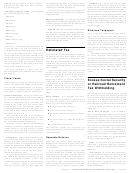 35
35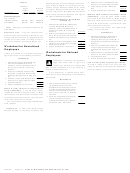 36
36 37
37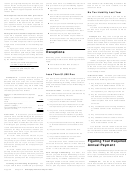 38
38 39
39 40
40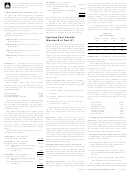 41
41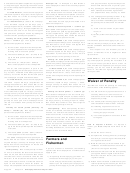 42
42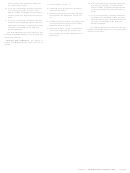 43
43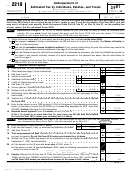 44
44 45
45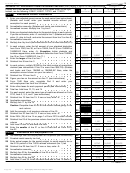 46
46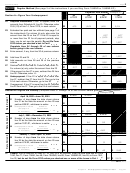 47
47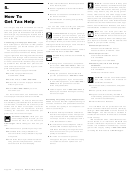 48
48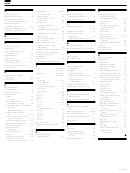 49
49








